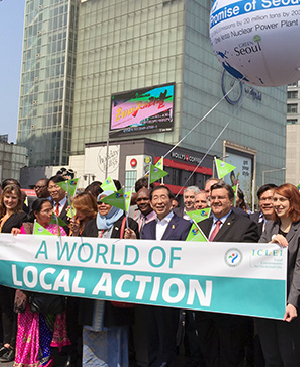- Home
- Reporting entities
- Hoi An City
Hoi An City
Vietnam-
Population 93954

-
Area 61.71km 2
-
GDP 7.4 TrillionVND
-
Targets by N/A N/Aemission
Targets by Hoi An City
There are no targets yet
- Start year: 2015
- Type: Climate adaptation /resilience plan
- Start year:
- Type: Advice / Tools
- Status: In operation
The project includes solar panels installed at Hoai River Square, which is expected to produce 55 KWh of electricity for operation of loudspeaker system, lighting and decoration of street art performances, decorative lanterns, Bridge Pagoda, Hoi An symbols, etc. The project promotes cooperation and friendship between the two cities: Hoi An, Wernigerode (Germany), contributing to forming and encouraging the habit of using environmentally friendly energy in the local community. The project contributes to mitigating climate change and developing sustainable tourism in line with the policy of building Hoi An into an eco-cultural-tourist city.
Read More Read Less- Commercial
- Other Emissions
- Start year:
- Type: Action plan
- Status: In operation
According to the new project approved by Quang Nam People's Committee in Novermber 2016, from Jannuary 1st, 2017 onwards, Hoi An city will have about 50 electric vehicles put operation on 3 fixed routes: from Bus Station of Tan An ward to the Ancient Town (park in Hoai River square or Hoang Dieu street), An Bang beach and Cua Dai beach. Visitors can also be transported to villages such as Tra Que vegetable village and Thanh Ha pottery village when needed.
Electric cars in Hoi An operate daily from 6 am to 10 pm with a pickup time of less than 2 minutes. The vehicles put into operation shall ensure the conditions of technical safety and environmental protection, being registered and inspected under regulations and fully equipped with the itinerary monitoring device.
- Waste
- Transport
- Start year:
- Type: Awareness-raising / Promotion
- Status: In operation
This is a project funded by the Okinawa People's Fund (Japan), which aims to clarify the current situation and waste issues of Hoi An City with the participation of Hoi An city’s residents and businesses; thereby devising measures to improve and develop plans to achieve the goal. In the future, the waste management model of Hoi An can be applied in other cities of Vietnam.
Read More Read Less- Waste
- Start year:
- Type: Technical / Infrastructural
- Status: In operation
The project will deploy, from 2015 to 2020, two main components including: 1) development of urban environment and infrastructure. 2) capacity building of regulatory agencies; and public awareness raising of climate change. Key construction works include water conservation facilities and improved water supply services such as the construction of Lai Nghi reservoir; installation of water leakage monitoring and detection equipments; inspection and maintenance of water pipes; training of geographic information systems (GIS) and installation of remote SCADA management and monitoring. In addition, the project will undertake the construction of Co Coo urban area, the road in the North of Cua Dai bridge, protection of coast and infrastructure by renovating the Phap Bao lake, DT6 road upgrading, construction of flood warning system in Vu Gia - Thu Bon river, upgrading of the hydrological meteorological monitoring network, improvement of salinity intrusion forecasting system, upgrading of flood warning and crisis notification systems, and strengthening of flood management and management capacities at government and community levels.
Read More Read Less- Mobility
- Coastal zone systems
- Urban risks associated with housing
- Terrestrial ecosystems and ecological infrastructure
- Water supply systems
- Human security and emergency response
- Green built infrastructure
- Waste water systems
- Human health
- Key economic sectors and services
- Communication systems
- Start year:
- Type: Technical / Infrastructural
- Status: Under construction / set up
Hoi An city has built and put into operation the waste water treatment plant in Cam Thanh ward. This ODA project of over 94 billion VND was funded by the French Government and has a capacity of 6,750m3/day. However, the plant receives waste water mainly from Minh An, Cam Pho and Son Phong wards, and part of Tan An and Cam Chau; so it meets only 40% of the city's total waste water volume. In addition, the Government of Japan provided a non-refundable grant of 220 billion VND to construct another waste water treatment plant with a capacity of 2,000m3/day. It is expected that by the end of 2017, the plant will come into operation to receive an additional 20% of the city's waste water, particularly in the seriously polluted Bridge Pagoda area.
Read More Read Less- Urban risks associated with housing
- Human security and emergency response
- Waste water systems


